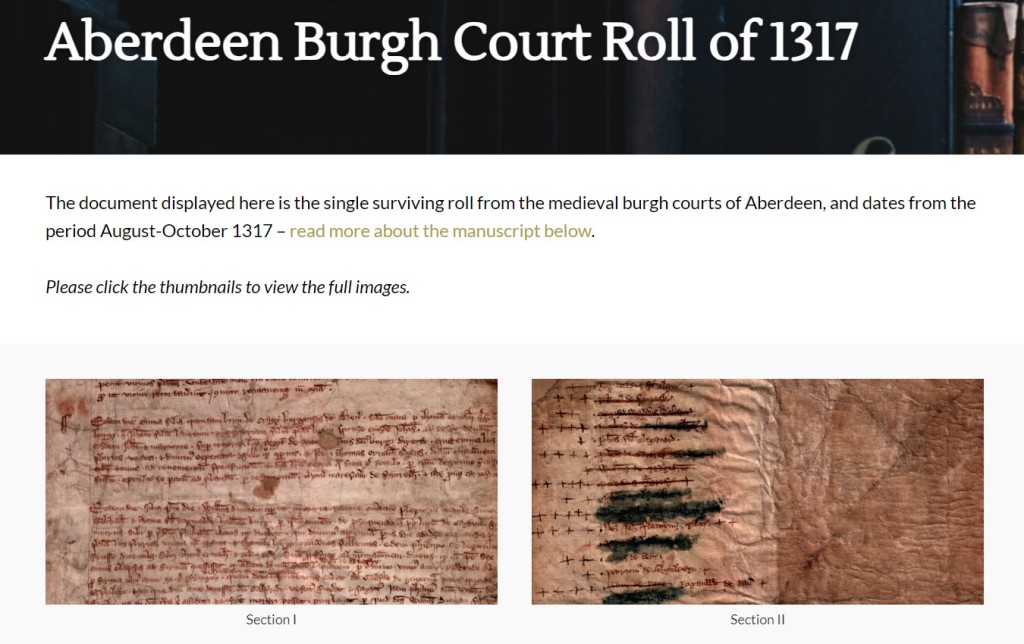Earlier this year the Stair Society published a digital facsimile of the Aberdeen Burgh Court Roll of 1317. These images are available via the Stair Society’s digitised manuscripts page and are reproduced by kind permission of Aberdeen Archives, Gallery and Museums.
This is the single surviving roll from the medieval burgh courts of Aberdeen, and dates from the period August-October 1317. The roll thus predates the later council register volumes, which survive from 1398 onwards. The burgh court roll is on parchment and it represents a unique survival from the courts of a Scottish burgh dating from the early fourteenth century.
A translation of the roll into English, and a discussion of its contents is available in Andrew R. C. Simpson and Jackson W. Armstrong, ‘The Roll of the Burgh Courts of Aberdeen, August-October 1317’, in Miscellany Eight, ed. by A. M. Godfrey, Stair Society 67, (Edinburgh, 2020), 57-93 (see The Roll of the Burgh Courts of Aberdeen, August–October 1317 (stairsociety.org)).
For further discussion of the roll and its context, see Andrew R. C. Simpson, ‘Urban Legal Procedure in Fourteenth Century Scotland: A fresh look at the 1317 court roll of Aberdeen’, in Comparative Perspectives in Scottish and Norwegian Legal History, Trade and Seafaring, ed. by Andrew Simpson and Jørn Øyrehagen Sunde (Edinburgh, 2023), 181–208.
And for a recent overview of this new book see this post by Andrew Simpson on the Edinburgh Private Law Blog.

A link to the burgh court roll at the Stair Society is now featured within aberdeenregisters.org, with a dedicated page and linked in the main menu.


